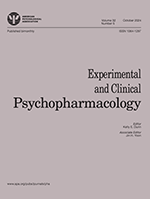
“We aimed at clarifying the strength and consistency of the association between cannabis use disorder and suicide attempts in bipolar disorder.
We could not perform a meta-analysis exploring the longitudinal association between cannabis use disorder and suicide attempts, due to the lack of suitable data.
The current evidence highlights a weak association between cannabis use disorder and suicidal attempts in bipolar disorder.
Due to the cross-sectional design of included studies, causal inferences could not be explored.”
https://www.ncbi.nlm.nih.gov/pubmed/31121199
https://www.sciencedirect.com/science/article/pii/S014976341830993X?via%3Dihub


 “Cannabidiol (CBD) is a natural compound of cannabis, which exerts complex and widespread immunomodulatory, antioxidant, anxiolytic, and antiepileptic properties. Many experimental data suggest that CBD could have several types of application in alcohol use disorder (AUD) and alcohol-related damage on the brain and the liver.
“Cannabidiol (CBD) is a natural compound of cannabis, which exerts complex and widespread immunomodulatory, antioxidant, anxiolytic, and antiepileptic properties. Many experimental data suggest that CBD could have several types of application in alcohol use disorder (AUD) and alcohol-related damage on the brain and the liver. “Despite the staggering consequences of the opioid epidemic, limited nonopioid medication options have been developed to treat this medical and public health crisis.
“Despite the staggering consequences of the opioid epidemic, limited nonopioid medication options have been developed to treat this medical and public health crisis.

 “The nonpsychoactive phytocannabinoid, CBD, was recently approved by the Food and Drug Administration for the treatment of children with drug-resistant epilepsy. This milestone opens new avenues for
“The nonpsychoactive phytocannabinoid, CBD, was recently approved by the Food and Drug Administration for the treatment of children with drug-resistant epilepsy. This milestone opens new avenues for 

